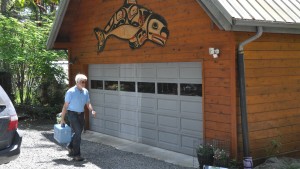
LIME KILN STATE PARK, SAN JUAN ISLAND – It is hard to describe what it’s like when you see a killer whale up close. “Awe” and “inspiring” are the two words that come to most people’s minds. If you ever want to have that awe-inspiring experience, then Lime Kiln State Park on San Juan Island, Washington is the place to go.
“This is the foremost whale watching park in the world,” says retired professor Val Veirs. “There’s no place else in the world you can go with a higher probability of seeing a whale.”
Veirs, who taught physics at Colorado College for more than 30 years, visited the San Juan Islands on vacation with his wife Leslie and never left. Unable to spend his retirement idly, Veirs turned his attention from particle waves to sound waves, and took up the hobby of recording underwater marine life. That’s when he heard his first killer whale.
“Somebody who was making recordings sent me a tape, it was back in the days of cassette tapes, and he played this tape and I said ‘Wow, that’s not what I’ve been hearing on my hydrophone, I’ve been hearing ferry boats and crabs, but I haven’t heard these marvelous sounds that these animals make.”
Now Veirs puts almost all of his efforts into tracking orcas. “Listening to the underwater sounds of the sea is an effort to try to understand the acoustic environment of the killer whales that very commonly visit this island,” he says.
Veirs recordings confirm what many scientists have theorized about orcas. Different groups of killer whales – known as pods – have different sounds. “There are about 85 animals in three pods, labeled J, K, and L,” says Veirs, “and each of those pods seems to have a signature or contact call. By listening to these a lot, you kind of develop a sense of the vocabulary.”